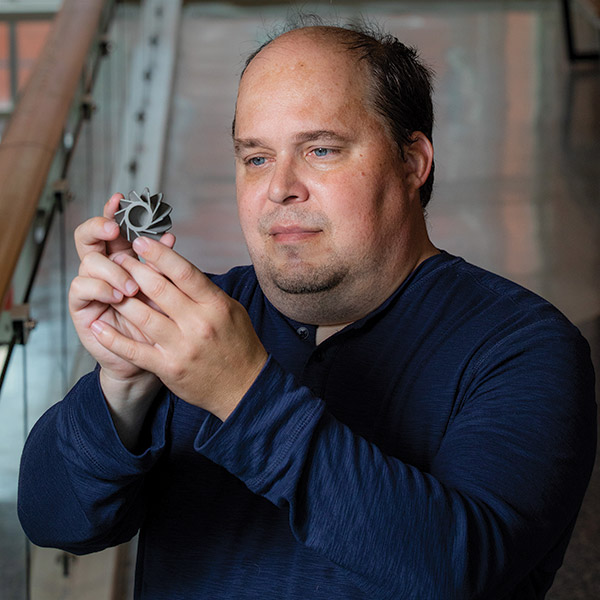Additive manufacturing (AM) holds the promise of transforming nearly every way that materials and components are conceived, designed, produced and used in service.
The possibilities and expected innovations are numerous, and their realization requires a truly multidisciplinary cadre of researchers.
Here at Iowa State, researchers are at the forefront of additive manufacturing, conducting leading research on: the design of new materials and additive manufacturing precursors; the manufacturing processes themselves; and the tools necessary to realize a vision where the materials state itself is known for every part produced – and its performance guaranteed.
New Materials
The microstructure of advanced materials “remembers” the localized thermal and mechanical histories. Additive manufacturing provides exciting new ways to radically change these histories, entering into process spaces that are not possible using any existing manufacturing techniques, making new materials possible.
Iowa State materials engineers are developing new ways of modeling and simulating the interplay between alloy composition, processing parameters – and the resulting predictions of microstructure, properties and performance are changing the way we design advanced materials.
Advanced Alloy Powders
The U.S. Department of Energy’s Ames Laboratory, located on the Iowa State campus, has a long tradition of excellence in processing important AM precursors, most commonly powder.
We have experts in modeling and simulation of the atomization process to help drive our process efficiency improvements (triple current industry yields) and in creating powder of the highest quality – including understanding the basic science associated with designing powder surface chemistries – to control the consolidated microstructure and properties that delivers high performance in final additively manufactured components.
Manufacturing Process
State-of-the-art AM goes hand-in-hand with hybrid manufacturing, which involves multiple manufacturing processes integrated with AM, along with multiple material components.
Both hybrid manufacturing and the manufacture of hybrid materials requires a very sophisticated understanding of the science of the manufacturing process itself. At Iowa State, we are developing the next generation of digital and physical tools to plan, predict and control the manufacturing process in order to achieve complex-shaped, high-performance components.
Nondestructive Evaluation
Application of nondestructive evaluation techniques is what provides the confidence to not only place additive manufactured parts into service but also remove parts from service.
Additive manufacturing enables increasingly sophisticated shapes and increasingly novel hybrid materials to be designed for extreme environments. So, researchers at Iowa State’s Center for Nondestructive Evaluation are developing new physical, measurement and data analysis tools to determine the materials state of additively manufactured materials, both post- and, even better, during their manufacture.
What’s Next
These Iowa State specialties are part of a larger, interdisciplinary team that has a vision to realize the multiple promises of additive manufacturing.
Better materials for more demanding applications. Generatively designed structures with spatially engineered hybrid materials. Ensuring that the quality of every part manufactured is unparalleled by engineering, controlling, and verifying the materials state. Redefining cyber security and enabling the digital thread. These possibilities, along with the training that we are providing to our students and engagement with various partners, are making for an stimulating time at Iowa State.
